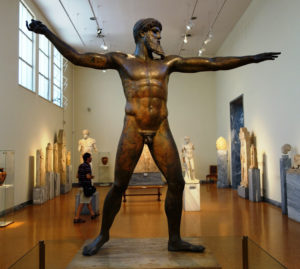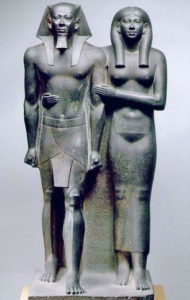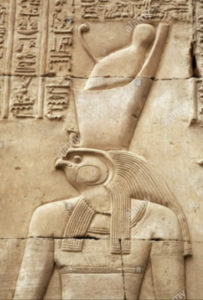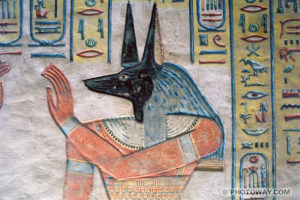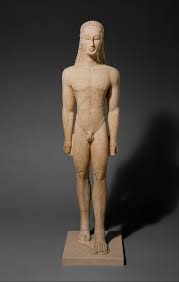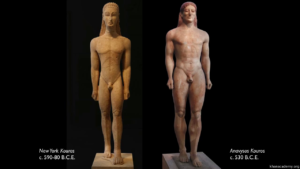Humanism in art is the era in which the main focus of art shifted from deities to humans. Unlike Mesopotamian and Egyptian art, which focused more on gods and served to honor/respect them, Greek and Roman art was focused more on humans and more importantly how humans are at the center of moral and social concerns. Humanism isn’t just about the shift from of focus from deities to humans but it is also about humans trying to understand the world around them, trying to find explanations as to why events such as natural disasters occur. An example of Humanism can be seen when comparing Mesopotamian and Egyptian art to Greek and Roman art such as comparing the Standing Male Worshiper from Mesopotamia to Polykleitos, Doryphoros from Rome. Although they are both statues that represent humans they are completely different.
The Standing Male Worshiper is a Mesopotamian statue made to honor a deity, its is used as a stand in for someone who when they are unable to pray to the deity. Since it was used only for worshiping deities there was no detail that can really be seen in the physical sculpture, the only detail that can be seen is the stylistic waves of the beard, the abnormally large eyes and nose with its small mouth and the basic detailing at the bottom of its robe. Unlike the Mesopotamian statue, the Roman statue was used to honor and represent the ideal male. Since Polykleitos, Doryphoros focuses more on humans it has a lot of more detailing on the human body. The hair is less stylistic and more natrualistic, the facial features are not only proportional to each other but also to the entire body of the sculpture, these features also seem to express some form of emotion, something that could not be seen in Mesopotamian art. Unlike in Mesopotamian art, Roman art is used to honor humans which is why most Roman art works are of nude men, it allows the artist to add detail to the actually body of the person such as giving them abs and defined muscle mass. Another major difference is the stance or each figure. most Mesopotamian works or art are of people standing completely straight without any sense of motion in their body which is completely different in Roman art in which there seems to be motion in all their artworks such as Polykleitos, Doryphoros in which the man is leaning on his right leg instead of standing straight up.

